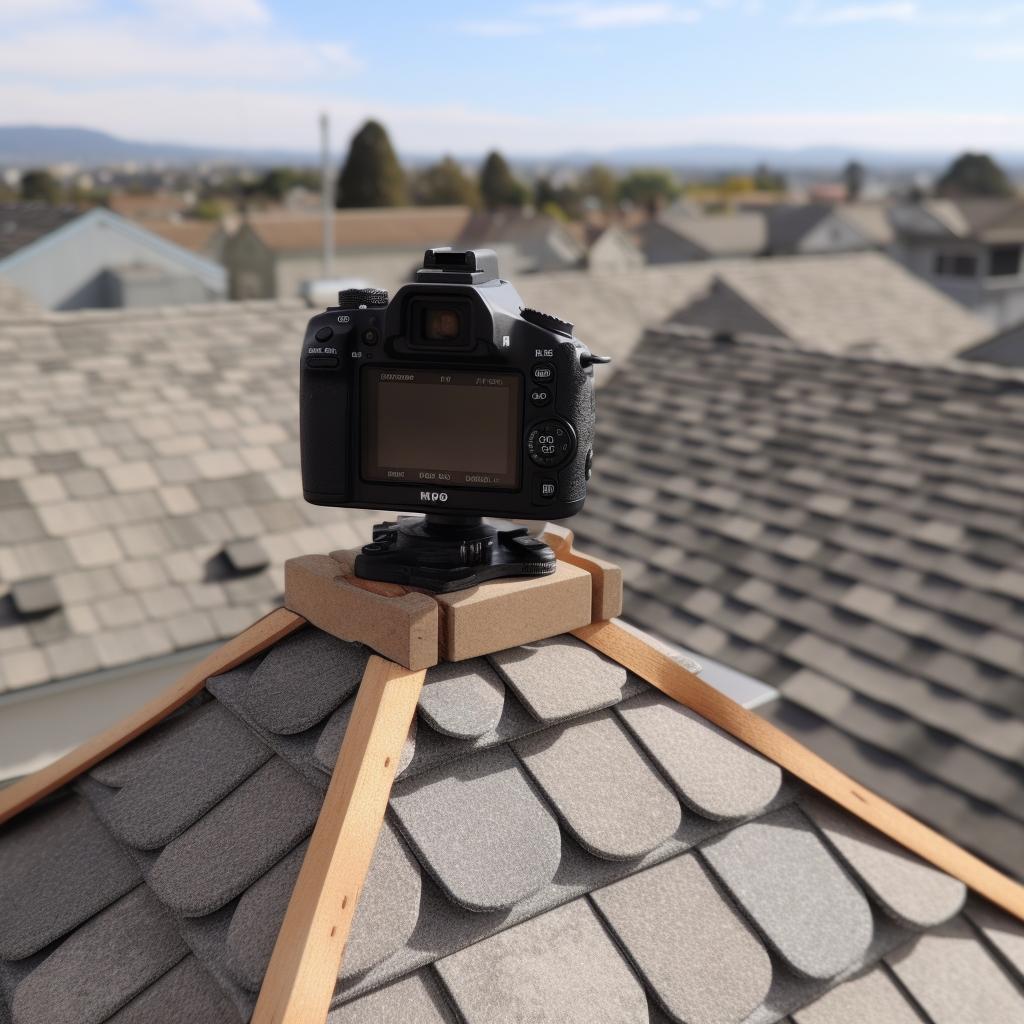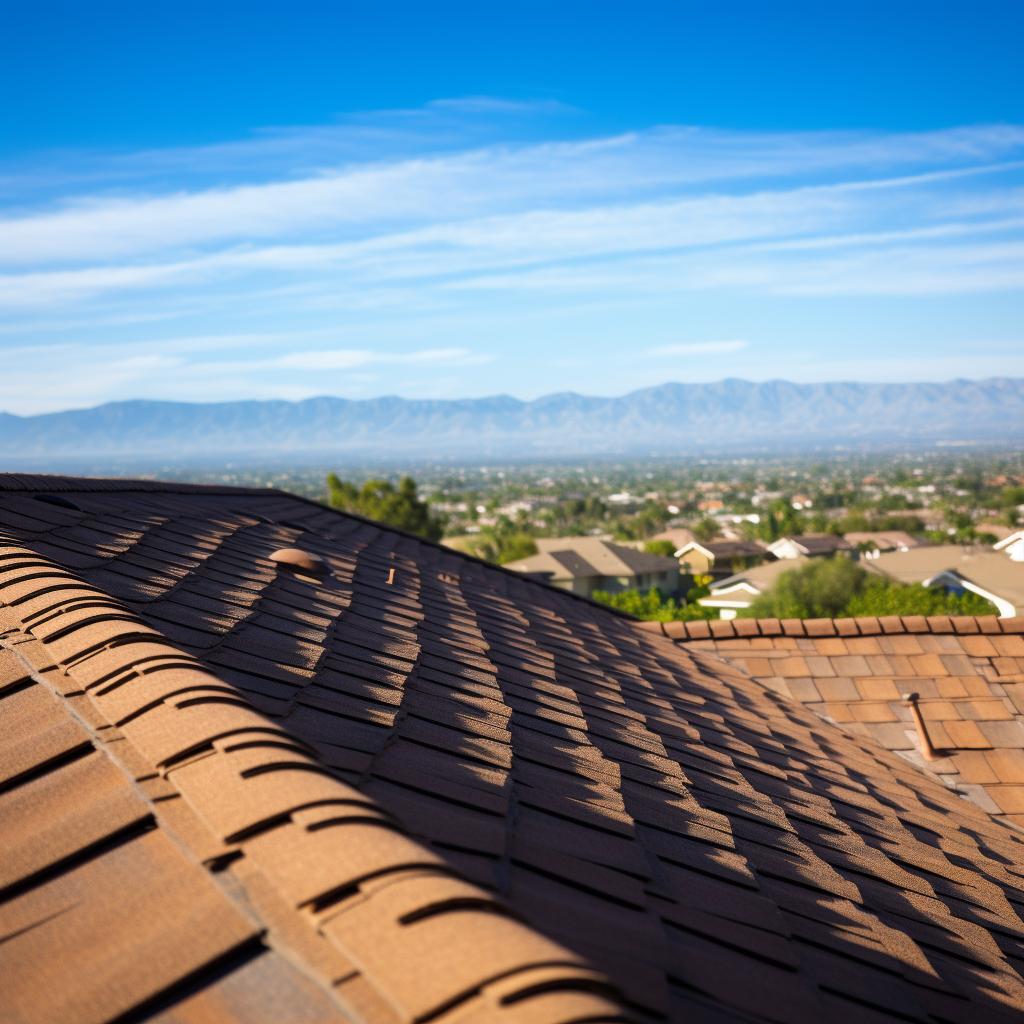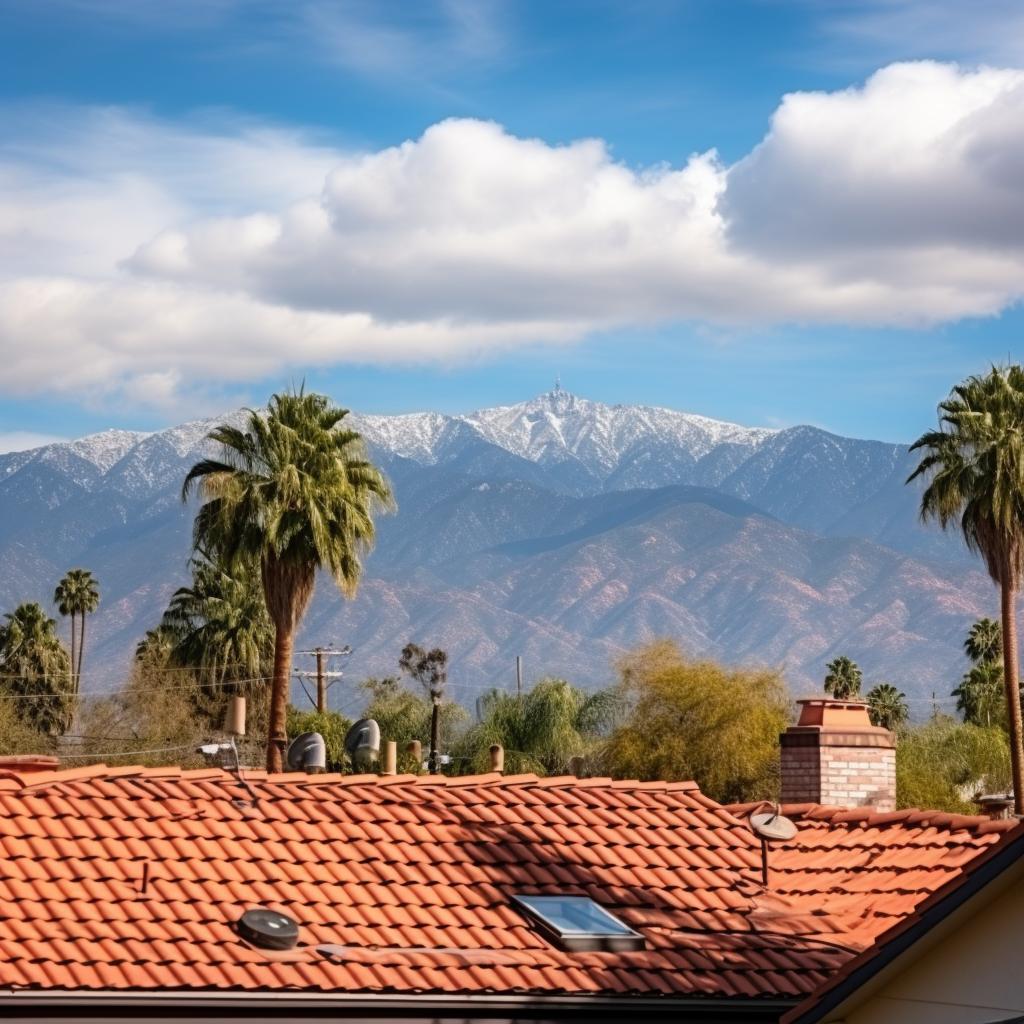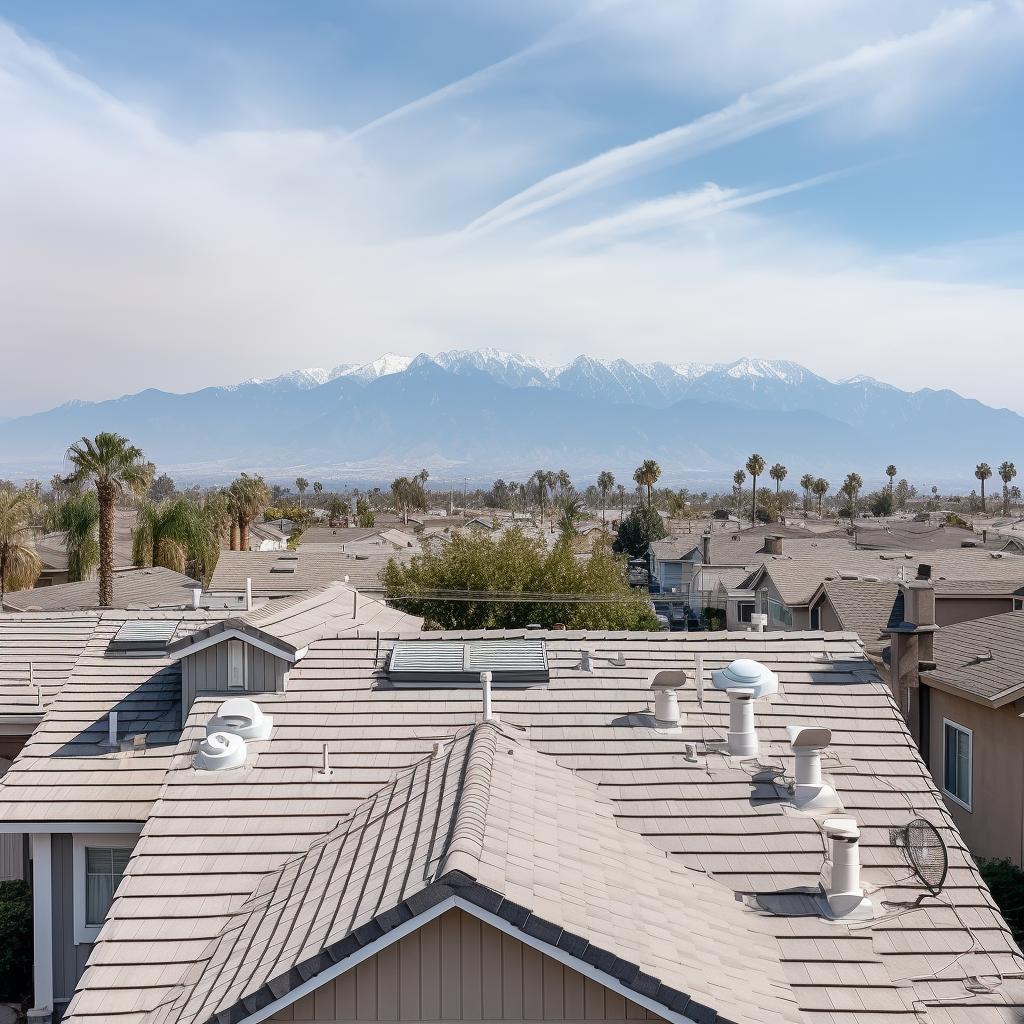Amid the quest for sustainable living and energy savings, Ontario locals are turning their sights skyward-to their rooftops. Green roofing technology is becoming an increasingly popular trend in the Canadian province, as more homeowners are captivated by its environmental and financial benefits. For those looking to join this eco-friendly movement while keeping an eye on expenses, finding affordable roofers Ontario has become a mantra in their pursuit of greener homes.
Green roofs aren’t just aesthetically pleasing enhancements; they’re innovative solutions designed to bring nature onto urban landscapes while offering significant cost savings over time. This introductory section will delve into what green roofing actually is and why it’s garnering so much attention among environmentally conscious Ontarians. We’ll explore how these living roof systems don’t just add a touch of greenery but come loaded with benefits that impact both personal finances and the broader ecological community.
The interplay of environmental stewardship and economic savvy makes green roofing technology appealing to homeowners across Ontario. With potential for reduced utility bills, longer-lasting roofing materials, and improved building efficiency, it’s no surprise that more people are adopting this approach to modern roofing.
These advantages go hand-in-hand with positive contributions to urban air quality and biodiversity, giving residents plenty of reasons to consider making the switch. As we unpack the layers-both literal and metaphorical-of green roofing technology, you’ll see why growing numbers of your fellow Ontarians are not only saving money but also contributing to a healthier planet right from their own homes.
The Basics of Green Roofing
Green roofing technology stands as a beacon of innovation within the construction industry, particularly among Ontario residents keen on blending environmental stewardship with economic sensibility. A green roof is essentially a building’s top layer that is partially or completely covered with vegetation and a growing medium, planted over a waterproofing membrane.
It includes additional layers such as root barriers and drainage and irrigation systems. As urban areas become more crowded and natural spaces scarcer, green roofs are rising in popularity not just for their aesthetics but for their role in creating more sustainable environments.
Understanding how green roofs work is key to appreciating their value. At the base of every green roof lies a high-quality waterproof membrane that ensures the building remains dry and protected. Atop this layer sits a root barrier that prevents roots from penetrating the membrane, which could lead to leaks or structural damage.
Next comes the drainage layer, usually made of lightweight materials like plastic or rubber, which allows excess water to escape instead of accumulating and putting undue weight on the structure. Soil medium follows, specifically engineered to provide necessary nutrients while remaining light enough for structural integrity. Lastly, drought-resistant plants are selected for their ability to thrive in high-altitude environments with minimal maintenance.
The true genius behind green roofs lies not only in their compositional layers but also in the ecosystem they create atop urban spaces. They serve multiple functional purposes including improving air quality by filtering pollutants and carbon dioxide out of the air; managing stormwater runoff by absorbing rainwater; mitigating urban heat island effect by providing evaporative cooling; promoting biodiversity by offering habitat for various species; and improving thermal efficiency of buildings which leads to significant energy savings.
Green roofs can tremendously influence both environmental longevity and personal finances through reduced utility bills-features which contribute vastly to why these eco-friendly solutions have soared in favorites among Ontarians.
| Component | Function |
|---|---|
| Waterproof Membrane | Maintains building’s dryness, protects from water infiltration |
| Root Barrier | Prevents roots from damaging waterproof membrane |
| Drainage Layer | Funnels excess water away from roof, reduces weight load |
| Soil Medium | A balanced growth environment that remains structurally light |
| Drought-Resistant Vegetation | Provides ecological benefits, requires minimal upkeep |
The Economic Advantages of Green Roofs
Green roofs are not only an aesthetic delight but also a source of significant economic benefits, particularly for homeowners looking to enhance their property’s value and reduce ongoing utility costs. The initial costs associated with implementing green roofing technology might be higher than traditional systems, but they are offset by the long-term savings that accrue over time.
Homeowners in Ontario are increasingly appreciative of the financial prudence that green roofs provide, considering the substantial reduction in energy bills due to improved insulation.
Insulation provided by the soil and vegetation layers above significantly moderates the temperature within a home, both during harsh winters and scorching summers. This natural thermal regulation reduces reliance on heating and air conditioning, leading to less energy consumed and markedly lower utility expenses.
Additionally, the extended lifespan of green roofs is due to the protection they offer against ultraviolet radiation and physical damage from environmental elements. While conventional roofing may need replacement within 20 years, green roofs have been known to last 40 years or more, which equates to fewer material costs and reduced labor for repairs over time.
The investment in a green roof can be viewed from a return-on-investment perspective as well. It elevates real estate values by differentiating properties with this eco-friendly feature that is sought-after in today’s market. Furthermore, greater stormwater management efficiency reduces the risk of flooding damage-a benefactor not just individual owners but also broader municipal infrastructure-and can sometimes lower water usage bills.
| Economic Advantage | Benefit |
|---|---|
| Energy Efficiency | Reduced heating/cooling costs due to natural insulation. |
| Durability | Fewer repair/replacement needs; longer lifespan. |
| Property Value Increase | Potential higher resale value with sustainable features. |
| Stormwater Management | Lower risk of flood damage; potential savings on water bills. |
Ontario residents who approach roofing with cost-savings and sustainability in mind find this upfront investment quite rewarding in multiple financial aspects over time.

Case Studies
Green roofing technology has not only been a buzzword in ecological circles but also a pocket-friendly revelation for homeowners across Ontario. As this sustainable practice continues to rise in popularity, it’s worth investigating real-life instances where Ontario locals have benefitted financially from integrating these systems into their homes. The following case studies provide insight into the tangible benefits that green roofs have brought to the residents of this Canadian province.
Urban Oasis: Transforming Skyscrapers Into Green Havens
In downtown Toronto, the Smith family resides in a high-rise building that recently underwent a green roof transformation. The roof, previously a heat-absorbing expanse of black tar, is now covered with sedum plants and native grasses.
The Smiths have reported a marked decrease in their summer cooling costs since the installation. Their building has become an emblematic example of urban green initiatives, reducing the urban heat island effect significantly – helping tenants save money while actively contributing to a cooler city environment.
Suburban Renewal: A Residential Success Story
Meanwhile, in the suburbs of Mississauga, the Dasgupta household decided to invest in green roofing for their detached home as part of extensive renovations. Initially apprehensive about the upfront cost, they were motivated by long-term savings and potential property value enhancement. Two years post-installation, they have noticed an approximate 25% reduction in energy expenses year-round due to improved thermal regulation provided by their living roof.
The added bonus? Their green roof has become a talking point in the neighborhood, potentially increasing interest and value should they decide to sell.
Rural Innovations: Embracing Green Roofs on Farms and Country Homes
Beyond urban centers and suburban landscapes lies another dimension where green roofing thrives – rural Ontario. Take the Bennett farm located outside Guelph; they installed a green roof on their barn with hopes of reducing heating bills during harsh winters besides stabilizing indoor temperatures for stored produce during fluctuating seasons. To their delight, not only did they note significant annual savings, but they also experienced an improvement in rainfall water management – with less runoff leading to decreased erosion on their farmland.
Through these diverse applications across various settings in Ontario-be it dense city cores or sprawling rural areas-green roofs are proving themselves not just as environmental statements but as shrewd economic investments too. Homeowners like these showcase how going green brings multiple returns on investment over time which beyond doubt fortifies both individual finances and collective ecosystems simultaneously.
Incentives and Rebates
Green roofing technology is not only a means to an environmentally friendly end but also a wise financial decision for homeowners. This dual benefit has been recognized by various governmental bodies in Ontario, which are now offering a range of incentives and rebates to make the adoption of this innovative roofing solution more accessible.
Government Grants and Tax Incentives
The government’s commitment to sustainable development and climate change mitigation has led to the introduction of grants and tax incentives aimed at offsetting the higher initial costs associated with green roofs. These initiatives enable homeowners to invest in green roofing without bearing the full brunt of the expenditure.
Certain programs offer direct cash rebates based on the size of the green roof, effectively reducing the square footage cost. Additionally, tax incentive programs can provide further relief by allowing deductions over several years, making the financial burden more manageable in the long term.
Provincial Rebate Programs
In Ontario specifically, provincial rebate programs are designed to promote green roofs among residential and commercial property owners alike. These programs often vary by municipality but commonly include partial refunds for retrofitting buildings with green roofs or for incorporating them into new designs. By capitalizing on such rebates, residents can save significantly on installation costs while contributing positively to urban environmental efforts like stormwater management control and air quality improvement.
Lowering Upfront Costs for Residents
The push for green infrastructure in urban areas is exemplified through these incentives, which relieve a considerable portion of upfront costs for residents willing to go green. Aside from installation cost reductions provided by rebates and grants, some cities also feature support programs that include consulting services or architectural guidance at discounted rates.
This not only accelerates return on investment through immediate savings but also ensures that installations are performed accurately according to best practices – leading to more effective results and greater longevity of one’s roof.
By taking advantage of these financial support measures, Ontarians interested in sustainable living can make their transition towards greener technology both economically viable and socially responsible. While factoring in long-term returns such as energy savings and roof longevity further bolsters the financial argument for green roofs, these short-term incentives play a critical role in bridging what might otherwise be an insurmountable initial cost gap for many households.
Finding Affordable Roofers
Navigating the shift to green roofing technology calls for hiring skilled professionals who can deliver quality service without stretching your budget. Many Ontario residents wonder where to find affordable roofers in Ontario that specialize in this eco-friendly alternative. The key is to tap into resources such as local business directories, sustainable building forums, and even social media groups dedicated to green living.
Word-of-mouth recommendations are also invaluable; asking friends or family members for referrals can lead you towards trustworthy contractors with proven expertise in green roofing installations. When embarking on this journey, it’s essential to start by compiling a list of potential roofers and then vet them based on their experience, licence status, customer reviews, and portfolio of past projects involving green roofs.
While cost is a critical factor when selecting a contractor for your green roof project, it’s imperative not to compromise on quality and experience for the sake of saving a few dollars upfront. Affordable roofers in Ontario should not only be able to provide competitive pricing but must also be well-versed in the intricacies of installing layered roofing systems that incorporate vegetation.

It’s beneficial to focus on companies that offer comprehensive services from initial design consultation all the way through installation and maintenance. By obtaining quotes from multiple providers, you can compare prices alongside the value offered – looking at what’s included in their services such as warranties, post-installation support, and the use of high-quality materials compliant with industry standards.
Before making a final decision on which roofer to hire, it’s wise to request detailed proposals outlining the scope of work, timeline of completion, payment terms, and any other specifics pertaining to your individual project. Ensure that they conduct thorough assessments of your current roof structure to determine suitability for a green roof conversion.
Clear communication regarding expectations and project requirements from both parties will lead to satisfactory results without unexpected expenses cropping up mid-project. Trustworthy affordable roofers in Ontario will be transparent about costs associated with your green roofing project while also ensuring they comply with all regulatory standards and municipal guidelines specific to where you reside.
By adhering to these strategies when searching for qualified professionals adept in the field of green roofing technology it’s possible for homeowners across Ontario to invest smartly in their properties’ future sustainability – achieving both ecological friendliness as well as long-term economic gains.
Maintenance and Care
Green roofs, like any other part of a home, require regular maintenance to ensure they remain effective in providing both environmental and financial benefits. For Ontario homeowners who have taken the eco-friendly leap, understanding how to care for their green rooftops is crucial. The upkeep of a green roof generally involves the inspection and maintenance of vegetation, substrate, drainage systems, and irrigation systems when applicable.
- Vegetation Maintenance: This includes weeding, replanting areas where plants may not have established properly or have been damaged by weather conditions. It also involves pruning and fertilizing to keep plants healthy.
- Substrate Care: Over time, the soil medium may become compacted or erode due to wind or rain; occasional replenishment might be needed. Additionally, the nutrient content should be monitored to ensure that plants are receiving what they need to thrive.
- Drainage System Check: Regular checks and cleaning of the drainage system help prevent blockages that could lead to water pooling and potentially damaging both the roof membrane and plant life.
- Irrigation System Upkeep: If your green roof has an irrigation system installed, periodic inspections are necessary to fix leaks or blockages that could affect its efficiency.
Preventive maintenance is vital as it can fend off larger problems down the line. Catching issues early minimizes repair costs and prolongs the life of your green roof.
In some cases, hiring a professional for annual inspections can be beneficial; specialists can identify potential issues that might not be obvious to a layperson. Creating a routine maintenance schedule will therefore help in safeguarding your investment while maximizing its lifespan-thus ensuring you enjoy those cost-saving benefits for as long as possible.
But as with most things in life, even with proper care there might still arise unexpected issues with one’s green roof that require prompt attention from experienced professionals. Seeking out affordable roofers Ontario who offer specialized green roofing services is critical for such unforeseen repairs or guidance. Seeking referrals from friends or using online platforms can aid you in finding contractors with strong reputations-who prioritize both the environment and your wallet when attending to your green roofing needs.
Remember that proper maintenance isn’t only about cost savings; it also directly impacts the environmental benefits provided by these structures. Prioritizing a well-kept green roof ensures continued support for local biodiversity while maintaining optimal insulation properties year-round-further reducing energy consumption and enhancing overall sustainability within our communities.
Investing time into learning about your specific type of vegetation, common local pests or diseases which could affect it, along with seasonal care requirements can go a long way in extending your green roof’s usefulness while preserving its pecuniary advantages. Regular engagement with every component of your rooftop garden will pay dividends not just today but well into future years-solidifying these innovative coverings as truly smart investments for each householder’s home ecosystem.
The Future Is Green
As green roofing technology advances, it’s shaping the way we think about our living spaces and their impact on the environment. This trend isn’t just for the aesthetics; it’s fueling an exciting future for homeowners looking to reduce both carbon footprints and energy costs. In Ontario, where eco-consciousness is on the rise among residents, these innovations in green roofing are becoming particularly attractive propositions.
One of the notable trends emerging within green roofing is the integration of solar panels with vegetative roofs. This hybrid approach not only maximizes space but also combines the benefits of renewable energy generation with those of a traditional green roof.
Innovators are working on solutions that allow for easy installation of solar panels above the vegetation without hindering plant growth or access to sunlight – creating a powerful, dual-benefit system that furthers homeowners’ ability to achieve sustainability goals while capitalizing on financial incentives available for both solar and green infrastructure.
Another area witnessing inventive changes is the material used in green roofs. Researchers are exploring new soil substitutes that provide better water retention and support for plant life while being lighter and more cost-effective.
These materials aim to lower structural support requirements, thus expanding the number of homes that can sustain a green roof without additional, expensive modifications. Moreover, advancements in waterproof membranes mean stronger protection against leakage with longer lifespans – directly translating into fewer repairs and replacements over time.

Always adapting to emerging environmental challenges, innovators are also focusing on air-purifying plants as part of green roof installations, responding to increased concerns about urban air quality. These specialized plants can absorb more pollutants than average varieties, creating cleaner air around homes and contributing towards a healthier urban environment. With every improvement in technology comes greater affordability-making it easier for Ontario families to invest initially and reap financial rewards well into the future.
The momentum behind these industry developments is clear evidence that going “green” is much more than a buzzword; it’s an ever-evolving revolution in building practices set to redefine what it means to have a sustainable home. With rising interest among locals seeking affordable roofers Ontario who can provide these cutting-edge solutions, there’s no doubt this region will continue leading progress towards greener living spaces that benefit our wallets as much as they do our planet.
Conclusion
Green roofing technology epitomizes a movement towards an environmentally sustainable future while rewarding homeowners with tangible economic benefits. The adoption of green roofs is more than a trend; it’s a commitment to a healthier planet and personal finance management. As Ontario locals seek innovative ways to tackle climate change, reduce their carbon footprint, and save money, the decision to switch to green roofing is increasingly becoming a clear choice.
The incentives in place make the transition both appealing and attainable. With government grants and rebates reducing the initial costs of installation, the economic advantages of green roofs have never been so within reach. After hurdling the initial investment, residents are finding that the reduction in energy bills, combined with an extended roof lifespan, leads to considerable savings over time. These financial gains further incentivize potential adopters who understandably weigh upfront costs against long-term benefits.
As we continue to unveil the many layers of benefits associated with green roofing technology – from its environmental positives to its cost-saving perks – it becomes evident why Ontario locals are embracing this innovative solution. Green roofs are not just a home improvement; they represent a shift in lifestyle choices toward sustainability and fiscal responsibility.
Taking into account all that has been discussed about this transformative approach to roofing, Ontario residents are well placed to leverage this technology for both ecological integrity and economical gain.
Call-to-Action
As we conclude our journey through the promising world of green roofing technology, it is evident that the advantages speak for themselves. This innovative approach to residential and commercial roofing has proven to be not only an environmentally conscious decision but a financially sound one too.
It’s clear from understanding the practical benefits of green roofs and hearing firsthand accounts from Ontario homeowners that making the switch can impact your wallet positively, providing substantial savings on energy costs while extending the lifespan of your roof.
The path toward a greener, more sustainable future begins with actions taken at home. If you’re an Ontario local considering a smart investment that supports both your finances and the environment, exploring green roofing should be at the top of your list.
Fortunately, taking this step towards sustainability doesn’t have to strain your budget; reaching out to affordable roofers Ontario can connect you with skilled professionals who can guide you through the process, ensuring you gain access to available government incentives and rebates that reduce initial expenses.
So don’t wait – take advantage of this opportunity to join a growing community of responsible homeowners. Contact affordable roofers in Ontario today for a thorough consultation on how these cutting-edge green roofs can transform your home or business.
From lowering energy bills and harnessing rebates to embracing eco-friendly living without compromising on financial savings, green roofing represents an intelligent choice for anyone ready to embrace innovation. Let’s work together towards a greener wallet and a greener world – begin your green roofing journey now.
Frequently Asked Questions
What Is the Cheapest Option for a New Roof?
The cheapest option for a new roof often includes selecting materials that offer a balance between affordability and durability, such as asphalt shingles. These shingles are widely used due to their cost-effectiveness and relatively easy installation process. Additionally, homeowners might reduce costs by choosing a simpler roof design that requires less labor.
What Is the Cheapest Type of Roof to Build?
When it comes to building a new roof, the most cost-effective type is typically a simple gable roof covered with asphalt shingles. Asphalt shingles are economical due to their low material cost and the competitive market among contractors skilled in this common installation. A straightforward design also helps minimize labor costs and complexity.
What Is the Most Expensive Part of a New Roof?
The most expensive part of a new roof is often the materials, particularly if high-end options like clay tiles, slate, or metal roofing are chosen. Beyond the raw materials, other significant expenses include skilled labor for the installation and any additional structural work that may be necessary to support heavier roofing materials.
How Big Is the Roof on a 2000 Sq Ft House?
The size of the roof on a 2000 sq ft house can vary significantly based on the pitch (slope) of the roof and the overall design, including overhangs and architectural features like dormers or valleys which increase surface area.
However, it’s not unusual for roofs on houses of this size to approximate 2500 square feet or more when all factors are taken into account.
How Many Squares Does It Take to Roof a 2000 Square Foot Home?
To cover a 2000 square foot home with roofing material usually requires about 20-22 squares of shingles or other roofing material because one “square” in roofing terms covers 100 square feet.
However, it’s important to note that this figure can change based on factors such as waste during cutting and fitting as well as additional layers needed for certain types of roofs.
How Do You Calculate Roof Cost?
To calculate roof cost effectively one should consider several variables including the size of your roof in square footage or in “squares,” local labor costs which can vary by region, choice of materials from economical asphalt shingles to more premium options such as metal or tile, complexity of your roof’s shape which impacts labor time and disposal fees for old roofing material if applicable.
How Many Squares Is a 2000 Foot Roof?
In roofing terminology, when referring to squares as unit measurements where one square equals 100 square feet, then logically speaking a 2000 foot roof translates directly into 20 squares not accounting for additional space required for overhangs or intricate designs where more coverage would be necessary.


